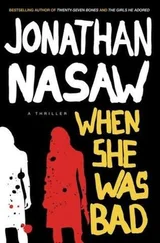This notion is compounded by the latest television advertisement for Rover cars, in which suppositions of Britishness are visually punned into a new, fashionably acceptable vision of Britishness. To an immaculate early-Seventies soundtrack, sourced from vintage Roxy Music and Sparks, the Rover commercial ‘remakes and re-models’ (to borrow from the title of another early Roxy Music number) a British landscape in which the Edinburgh Tattoo becomes the tattooed arm of a young woman at a rave, and a kid munching fast food on a skateboard becomes an arch reference to Meals on Wheels. With a knowing catchphrase, ‘It’s nice to know that things haven’t changed a bit’, Rover’s heavily pushed advertisement is selling New Britain as a state of mind by effectively suggesting that Old Britain is dead and buried.
This trend for montaging laundered notions of British popular culture into a commodified vision of New Britain has been matched – in this age of fetishized Newness – by the search for the New Authenticity. Rather like a short story by Chekhov dramatized by old clips from police surveillance videos, perhaps the function of the New Authenticity is to suggest a social conscience in the lingering dusk if post-modern chaos, and to provide a new cast of everyday heroes to people moral fables. As the national media report the case of a twelve-year-old mother who had sex with her thirteen-year-old boyfriend because they were bored with watching the coverage of Princess Diana’s funeral, there is a sense that the layers of irony attendant on mediating definitions of contemporary Britain have gone beyond critical mass, and finally imploded.
In a blistering editorial in the May 1998 issue of Living Marxism , Mick Hume described the conversion of ‘Cool Britannia’ into what he terms ‘Ghoul Britannia’. Having identified a parading of dysfunctionality, death and despair in many aspects of British culture, from the lyrics of Radiohead and the pathological end of BritArt, to films such as Nil by Mouth and Gummo , he suggested that the dangerously self-defeating miserabilism of ‘Ghoul Britannia’ is ‘symptomatic of a society which has lost faith in itself, one which sees humanity drowning in a bloody gut-bucket of its own making’.
Such a conclusion, in many ways, could be the ultimate destination of the British search for cultural authenticity: the belief, mistaken or otherwise, that the only aspects of ordinary life worth recording are those which reflect dysfunctional behaviour. And this could be seen as a repetition of the trend for problem films, in the early 1960s, that exhausted the true artistic potential of British ‘kitchen sink’ cinema by merely cloning the various ‘problems’ into a threadbare formula. Writing in the Spectator , in 1962, one exasperated critic remarked: ‘We’ve seen the brooding terrace, we’ve heard the moaning factory whistle and frankly we don’t care any more.’ This was not, one feels, indifference to social issues; rather it was impatience with the idea that the whole of British realism could be seen through one, increasingly self-parodic, point of focus.
As though to address this aspect of New Authenticity, there is now a new middle ground to Britain’s pop cultural reflection of itself. The success of Men Behaving Badly , as the grand manifesto of Laddism Nouveau, has been succeeded by the televisual equivalent of a ‘call to all cars’ to find something – anything, pretty much – that will bring the success of Helen Fielding’s Bridget Jones’s Diary to the television screen. And this New Comedy of Recognition has a twin in what could be called the New Tragedy of Recognition: more than a decade after thirtysomething turned middle-class American domestic trivia into the stuff of epic theatre, the patrician classes of the British media have hatched a robust cult for public confession, which is now demanding a home on television. And, doubtless, will get one.
Between the vogue for ironic retro-kitsch and the drift towards New Authenticity, a situation has arisen in the articulation of Britishness that could be said to demand the exchange of cleverly honed trends for a return to old-fashioned – some might say reactionary – statements of intent. There is a feeling of slight relief when one comes across one of those brightly coloured adverts that announce, with no further ado, ‘It does exactly what it says on the tin!’ After the succession of dizzyingly jump-cut, defiantly conceptual and ultra-fashionable blipverts, there is something faintly endearing about the straightforward hard sell. And the same, perhaps, can be said of those works of art or cultural interventions that make no attempt to lubricate the wheels of their conceptual thinking with self-advertisement, irony, pastiche or high-minded punning.
As part of the ‘artranspennine 98’ exhibition, which used the whole of the trans-Pennine region from Liverpool to Hull as a venue for showing contemporary art, there was a work by Joseph Beuys, situated in the Victoria Gardens beside the Henry Moore Institute, in Leeds. As an artist, icon and shaman, Beuys can be ranked with Warhol and Duchamp as a figure who managed to harness the energy of his century, and translate his personal experience of that energy into monolithic statements about humanity.
The piece by Beuys in Victoria Gardens is part of a work called ‘7,000 Oaks’, which the artist initiated in 1982 for the international exhibition Documenta 8, and which has subsequently spread around the world. It comprises a young tree, planted beside a basalt marker. The basalt was mined from volcanic vents near Kassel. The catalogue note for the piece explains the epic intentions of the seemingly simple work: ‘The combination of a living, growing tree with the immutable presence of stone is one individual’s response to the vulnerability of nature in the face of destructive progress.’
‘7,000 Oaks’ does exactly what it says on the tin, and is all the better for it.
Every view upon an age is bound to be a portrait of the viewer – a vista seen through the eyes of generational prejudice. Looking down from the apartment in Warrington Crescent, there was a feeling of being momentarily absent from one’s body, neither lost in thought nor quietly meditational, but drawn, somehow, down into the gusting rain and the darkness – a kind of emotional hypothermia, with memories taking the place of sleep.
Ian Devine, the former guitarist with punk progressives Ludus, hit mid-middle age towards the end of the Nineties, extolling both the Saga senior citizens’ magazine and the writings of the Australian historian, Greg Dening. It was Dening who wrote, ‘We make sense of the present in our consciousness of the past,’ and who advocated the writing of history in the present tense. Divine’s ultimate aim was ‘cultural disengagement’ – ‘I want to not know,’ he says, ‘who Hugh Grant is …’
TWO The Barbarism of the Self-reflecting Sign
The surface of the water in the plastic cup had been perfectly still just a second ago. Now, though, was it your imagination or tired eyes, or had the faintest ripple, a tiny freak outbreak of miniature choppiness, disturbed its earlier calm? In this light – iron-grey storm clouds pressing down, dusk falling fast – it was difficult to tell.
No – look! There it is again! That sudden shimmer on the surface of the water, as if someone were gently tapping the cup from underneath. A distinct jolt, like a kind of sonic boom reaction to some …
With claw prints the size of parking spaces, the Tyrannosaurus Rex slammed his way through the tense, electrical air of the lowering tropical storm. Hard in his sights was that gleaming symbol of contemporary urban person’s assertion of the backwoods-roaming, paragliding, authenticity-boosting, camp fire, free spirit, white-water lifestyle: an off-road 4×4 land cruiser – of the sort that could be seen almost any day of the week, being loaded with ciabatta croutons, bagged salad and Chilean Merlot outside any number of edge-city retail park, twenty-four-hour, thirty-two-checkout, Mothership supermarkets.
Читать дальше












